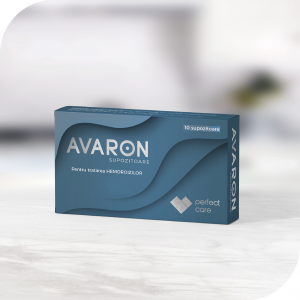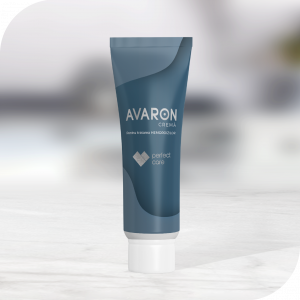

What are Hemorrhoids?
Hemorrhoids have the physiological role of protecting the anal sphincter, helping to close the anal canal during increased abdominal pressure, and providing different sensory information that helps to differentiate between gases transiting this area and fecal matter. Because of their strong vascularization and localization, hemorrhoids frequently become the cause of hemorrhoidal disease. These structures become pathological when they become inflamed. It is estimated that about half of the adult population has experienced problems with hemorrhoids by the age of 50. There are certain factors that predispose to the appearance of hemorrhoids . Although the precise cause is not well understood, hemorrhoids are associated with conditions that increase pressure in the hemorrhoidal plexus area, such as straining during constipation. Other causes include obesity, pregnancy, chronic diarrhea, chronic constipation, sedentary lifestyle, low fluid intake, alcohol abuse and a low-fiber diet, or damage to the supporting tissue of hemorrhoids due to aging.What are the types of hemorrhoids?

În funcție de stadiul în care se află afecțiunea, hemoroizii se clasifică în:
Depending on the stage in which the condition is located, hemorrhoids are classified into:

1. INTERNAL HEMORRHOIDS
It is located inside the anal canal and does not cause pain.

INTERNAL HEMORRHOIDS
It is located inside the anal canal and does not cause pain.

EXTERNAL HEMORRHOIDS
It develops near the anus, where there are numerous nerves, so in addition to bleeding, local pain may also occur. Sometimes hemorrhoids can grow and cause swelling in the anus area.

THROMOSIC HEMORRHOIDS
It is formed when blood clots form inside the swellings that occur in the case of external hemorrhoids.
Hemorrhoids are classified into four different stages of development, stages that are taken into account when determining the appropriate treatment by the specialist doctor:

In which anal bleeding occurs during defecation.

When connective tissue loosening occurs (also called prolapse).

During defecation or on exertion, hemorrhoidal prolapse can occur but can be pushed back into the rectum manually.

Hemorrhoidal masses protrude from the anus as a swelling that cannot be reinserted into the anus.
Hemorrhoids are classified into four different stages of development, stages that are taken into account when determining the appropriate treatment by the specialist doctor:

In which anal bleeding occurs during defecation.

When connective tissue loosening occurs (also called prolapse).

During defecation or on exertion, hemorrhoidal prolapse can occur but can be pushed back into the rectum manually.

Hemorrhoidal masses protrude from the anus as a swelling that cannot be reinserted into the anus.
Patients over 40 years of age with rectal bleeding and younger patients with risk factors should undergo full colonic evaluations by colonoscopy, CT colonography or barite enema.
The most common symptom of internal hemorrhoids is light reddish bleeding, sometimes accompanied by pain or a feeling of pressure, discomfort or a feeling that elimination is not complete. If pain also occurs, this spot suggests an anal fissure, perianal abscess or thrombosed hemorrhoids.
First-line conservative treatment of hemorrhoids consists of a high-fiber diet (25 to 35g per day), increased water intake and warm baths. Fiber supplementation decreases hemorrhoid bleeding by 50% and improves overall symptoms. Warm water baths temporarily reduce the pain.
Left untreated, hemorrhoids can cause various complications. The most common and serious complications of hemorrhoids include acute hemorrhoidal thrombosis and thrombosed internal hemorrhoids. It is characterized by severe pain in the perianal region, possibly with bleeding. Chronic bleeding can also lead to the loss of large amounts of blood and the development of anemia.


The most commonly used type of minimally invasive intervention is rubber band ligation. With this procedure, the doctor places a rubber band around the base of the hemorrhoid, restricting blood flow, and thus the hemorrhoid will detach and be removed within 1-2 weeks. But due to the fact that the procedure can be painful and especially the risk of unwanted complications, many patients refuse this type of intervention. Complications include severe infections, pelvic sepsis, gangrene, tetanus, massive bleeding and bacterial endocarditis, which require prompt intervention.
There are several topical remedies for hemorrhoids. They can provide temporary relief and improve the patient’s quality of life. These include astringents, protective agents (zinc oxide), decongestants (phenylephrine), corticosteroids and topical anesthetics. Constant use of creams, ointments or suppositories during the period of onset of symptoms can relieve discomfort and reduce inflammation. However, the need to develop alternative preparations that offer new therapeutic benefits has arisen. One such strategy is the use of topical remedies with multiple active ingredients.


Tratamentul conservator de primă linie al hemoroizilor constă într-o dietă bogată în fibre (25 până la 35 g pe zi), aport crescut de apă și băi cu apă caldă. Suplimentarea cu fibre scade sângerarea hemoroizilor cu 50% și îmbunătățește simptomele generale. Băile cu apă caldă reduc temporar durerea.









